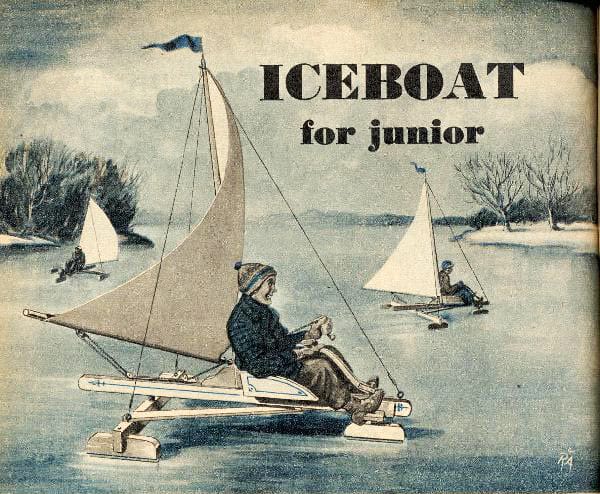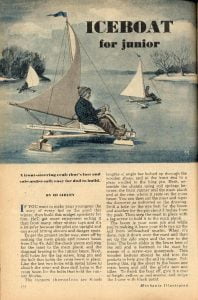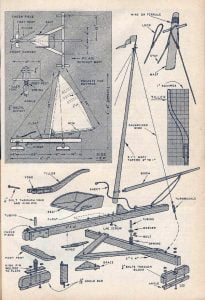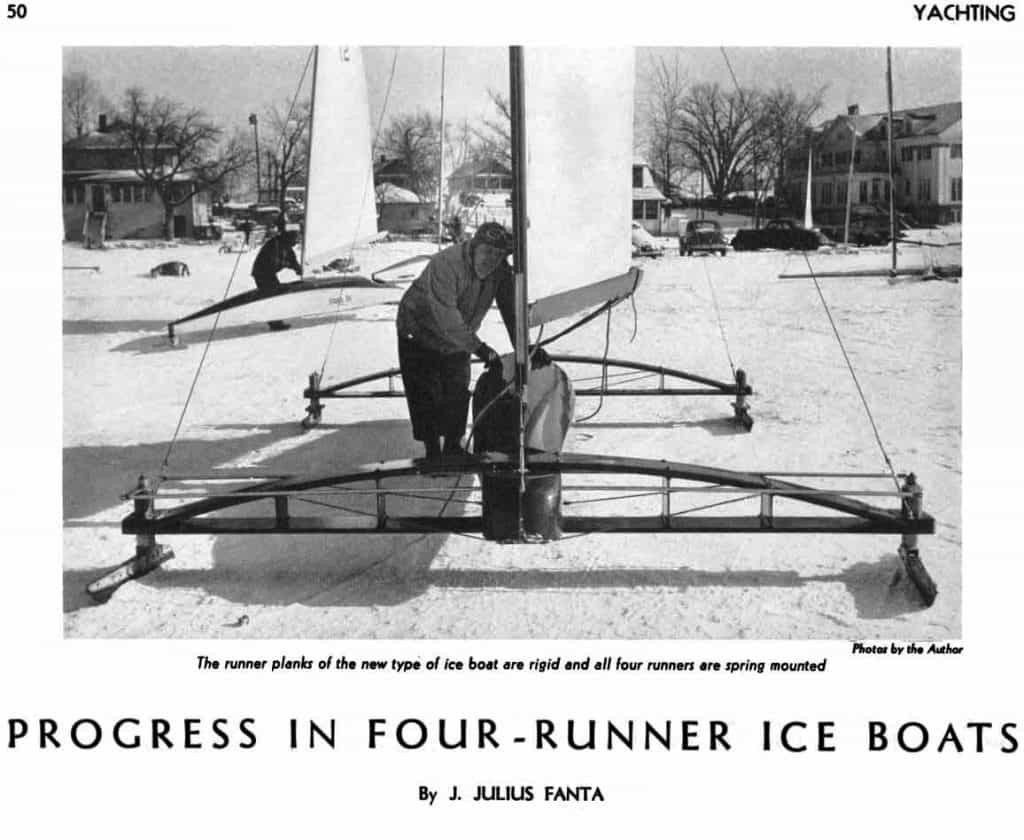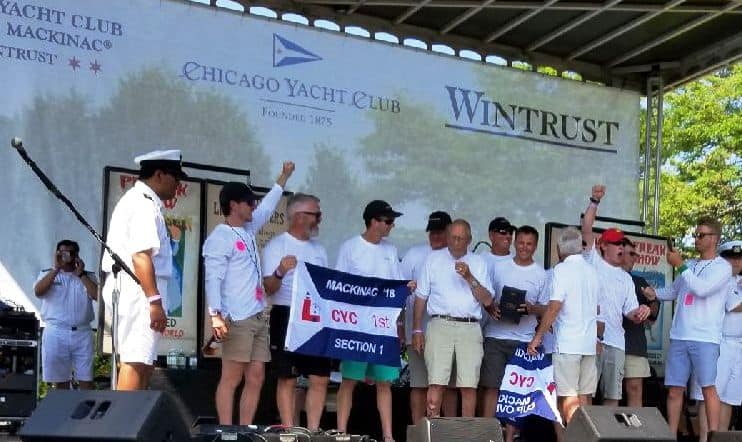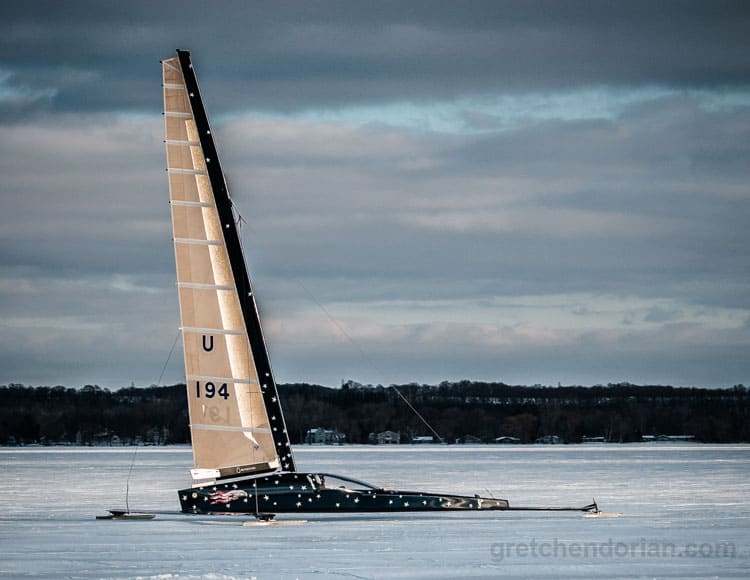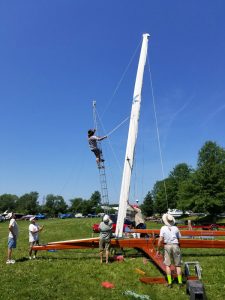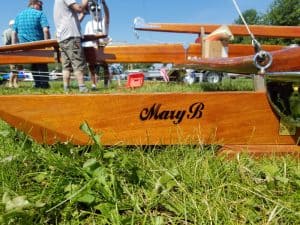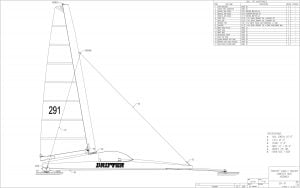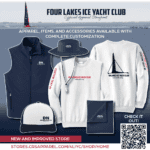2017-2018 Season Archives
2017-2018 Archives
2017-2018 Season:
- DN Regattas
- Northwest Regatta CANCELLED FOR THE SEASON
- International Skeeter Association and Renegade Championship POSTPONED UNTIL DECEMBER 2018
Iceboat Tech That Never Caught On: Front-Seater Junior Iceboat
These Mechanix Illustrated plans for a front-seater junior ice yacht never caught on but you can still “make your youngster the envy of every kid on the pond” with a modern Ice Optimist iceboat. The illustration reminds me of the 2008 video of the Stern-Steerer Kid, embedded below the plans.
Hoofers Presents: Coyote: The Mike Plant Story
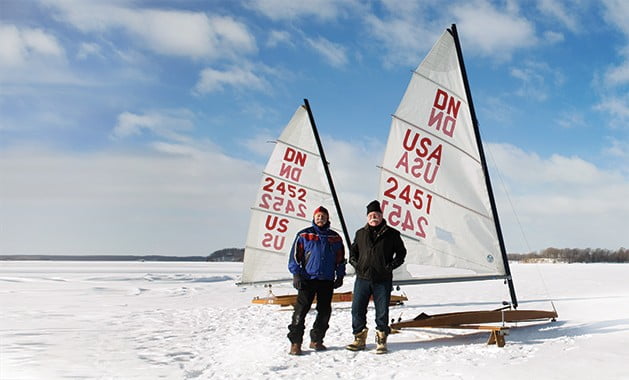
(Not Mike Plant but needed a Minnetonka photo with famous iceboaters.) Lake Minnetonka iceboat sailors & Olympians Bill & Harry Allen in 2014.
Hoofers Sailing Club is bringing the feature documentary, Coyote: The Mike Plant Story to the Wisconsin Union Theater on August 18th. Mike Plant was born in Minneapolis and began his sailing career on Lake Minnetonka.
An audience favorite at countless film festivals, Hoofer Sailing Club is proud to bring Plant’s story to Madison and celebrate an iconic Midwestern sailor. All proceeds of this event benefit the Hoofer Marina Project.
Date Saturday, August 18th, Doors Open: 6:30 PM, Screening: 7:00 PM
Location Wisconsin Union Theater,. Shannon Hall, Memorial Union
Buy tickets here.
Madison Area Antique & Classic Boat Cruise
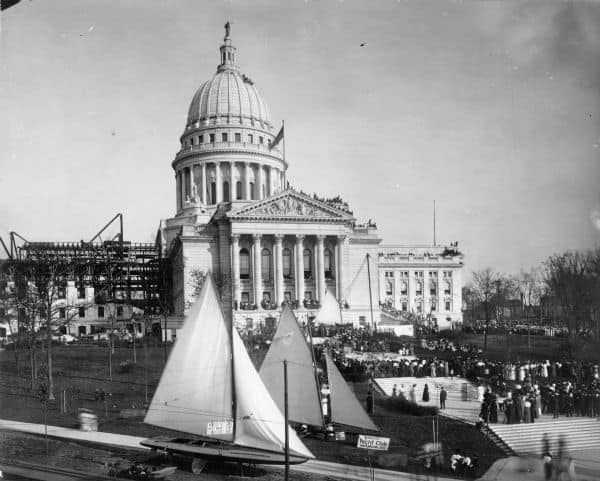
The 4LIYC and Mendota Yacht Club have been actively promoting wooden boats in Madison since the late 1800s.
Another summer milestone is here, meaning we are nearer to December’s hope for ice.
Glacier Lakes Chapter
The Madison Area Antique & Classic Boat Cruise
August 3rd and August 4th 2018
Stop over to the Edgewater Hotel tomorrow (Friday, August 3) around the noon hour for a look at some of these wooden beauties. Our Commodore Don Anderson will be there with a couple of his classics. Instead of a static boat show on Saturday, the group will cruise around Lakes Waubesa and Monona. 4LIYC Renegader Andy McCormick is one of the program directors for the Glacier Lakes Chapter. More information at the link above.
The photo above from 1914 is posted on the Wisconsin State Historical Society website.
“Elevated view of the Wisconsin State Capitol building, showing steel work of North Wing under construction. Crowds of people are gathered on the lawn for the Fall Festival. More people are gathered on the roof of the Capitol building just below the dome. Two boats are on display in the foreground near a sign that reads: “Mendota Yacht Club ‘Boost Madison Lakes.'” The iceboat on the right is the Princess II and the sailboat on the left is the Neireid. The Neireid was owned by Henry Fauerbach (an uncle of our own Peter Fauerbach) and Lew Porter.”
Iceboat Tech That Never Caught On
Here’s some content for the doldrums of ice sailing, technology that never caught on. As I’ve stated before, iceboating appeals to dreamers. Some of their ideas became standard equipment but most didn’t.
In the 1930s and 40s, yachting author J. Julius Fanta must have taken a fancy to the idea of a four-runner iceboat and wrote at least two articles about them. In a thoroughly detailed article in Yachting Magazine about a four-runner Skeeter developed on Geneva Lake, he predicted “the four-runner iceboat is the coming thing in ice yachting and not a fly-by-night experiment.” Four-runner iceboats never became popular because they were not an improvement upon a standard three-runner iceboat. Download the Yachting Magazine article in pdf.
In a 1940 Popular Science article, he presented detailed plans for a four-runner stern steerer.
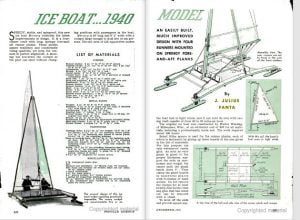
A four-runner Skeeter was photographed by Carl Bernard at the 1947 Northwest on Lake Winnebago.
UPDATE: July 30, 2018: Via Skeeter Iceboat Club member, Jane Pegel:
Skeeter Ice Boat Club member Bob Ferris built and raced a 4-runner Skeeter. I believe this was in the 1950’s.
This boat had a springboard at the bow and also at the stern with a runner on the end of each springboard.
My recollection is that the runners at each end were steering runners and could be turned via cables and foot pedals.
The runner plank was located approximately half way between the two ends of the boat.
The runner plank was shorter than customary. When sailing, the bow and stern runners were on the ice
and the runner on the leeward end of the runner plank was on the ice. The runner on the windward end
of the runner plank “floated” slightly above the ice surface.The idea of the design was to be able to turn “on a dime”. The boat could make a tight turn at the
leeward mark (occasionally spun out.) Bob won some races with the boat but basically the boat was not as fast as her
competition sailing on the “straight away”. Only the Bob Ferris design would turn on a dime. Only three of his runners were touching the ice, what ever runner that was on the windward end of the runner plank was floating above the ice. The 4 runner boats that essentially were a rectangle would not be able to turn on a dime.
Ice Sailors Compete in Mackinac Race
UPDATE: July 25, 2018
Congratulations to the Equation Team for winning the Section 01 / Mackinac Cup Division. Results
Via Ron Sherry’s Facebook page, posted July 23: “Wow Equation first in class First over all so far in the 333 mile Chicago to Mackinac race. One of the toughest races I ever competed in. It blew hard from the north up to 30 Kts. the whole way with Huge waves. We never put up a spinnaker or a jib top or a staysail. It was up wind against the waves the whole way. We had 17 crew that never left the rail. Most of the crew only went below to put dry clothes on or bring snacks up for the rest of the crew. WHAT A SUPER HUMAN EFFORT!!! The big difference was when the call was made to sail right up the middle of the lake on port tack Sunday morning taking the best of what Lake Michigan had to offer WOW. The pounding Equation and the crew took was brutal, but we got a 25 degree left wind shift with lots of leverage and reached across the fleet with a huge lead we would never relinquish. We finished at 4:00 am. this morning, and all the bars were closed, but don’t worry we will get our fair share today.”
Another sign of the high season of summer approaches, the Race to Mackinac and ice sailors will be on board some of the 350+ boats that will race from Chicago to Mackinac Island on Lake Michigan. The racing begins on July 21. Here’s the annual list and please email to me and let me know if I’ve missed anyone.
- EQUATION (Section 01)
Ron Sherry DN US44
Chris Clark DN US4789
Tom Dawson DN US5470
Skip Dieball DNUS5
Griffin Sherry DN US4 - DENALI (Turbo Division)
Rick Hennig DEUCE stern-steerer
Dave Elsmo DN US5486
Dave Aguilar DN sailor
Matt Barron DN sailor
Nick Hovland DN sailor - BANDIT
(Section 2), with DNer Chris Berger DN US5166 and Marcy Grunert. BANDIT’S owners Arvid Eiesland and Joe Kestler have DNs, Arrows, and an old Palmer Skeeter. John Poast is also an ice sailor on this boat. - SHMOKIN’ JOE Section J111
Julie Jankowski DN US4271 - WINDSONG (Section 8) has DNer Andy Camarda on board.
- MC^2 (Section 01)
Matthew Kickhafer DN US5602
Steve Kennedy DN sailor
The “R” Word: Free Iceboat to Restore
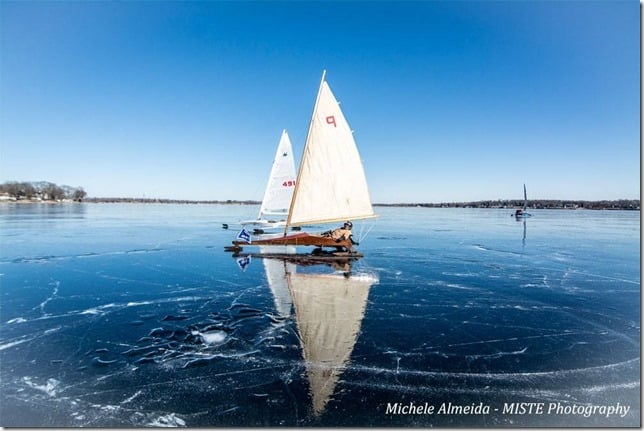 ..to this in a few simple steps. |
UPDATE: July 17,2018: The boat has found a home on Lake Como. Thanks to all who helped with this rescue.
Skeeter Iceboat Club sailor Steve Schalk recently came across the proverbial barn find near Delavan, Wisconsin that dates back to the beginning of the Skeeter class.This 1930s iceboat was home built and patterned after Walter Beauvaix’s early open-back Skeeter design. Just the hull and plank remain and It’s always been stored in a dry barn waiting for either the woodpile or for someone to restore her. If you’d like to save the boat from the burn pile and take on a restoration project, contact i546@charter.net to arrange pick-up. Andy Gratton has offered to donate a sail for the boat.
To learn more about the history of Beau Skeeters, read “A New First“, about the Goes family’s original Beau Skeeter PIKE, and “Wish You Were Here: Skeeter Iceboat Club History“.

Early Beau Skeeter PIKE, on the left with the P sail.
Independence Day
A Boat That Is On Ice In July
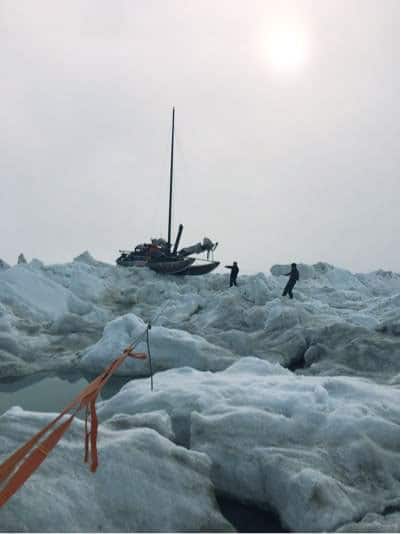
While this craft isn’t exactly our definition of an iceboat, it’s July and it’s content for this website. On June 19, three French sailors began an expedition in a catamaran fitted with skis with the goal of crossing the Arctic Ocean via the North Pole by sail and without motor. This is their third attempt since 2011. Their journey will cover 1,1750 miles (3,000 kilometers) between Alaska and the island of Spitsberger in Norway. Here’s their latest blog post:
July 1, 2018: Today, we traveled 1 mile! But we, on foot, a good dozen … Between recognition, hoists, and a few big bags to lug (unloaded from the boat to lighten, pass, then reload) to successfully pass blocks from 2 to 8 meters. But we are satisfied with our day. We are passing the critical part, the big coastal chaos, and it is encouraging to say that we can pass in such corners !! It’s magic, a chaos of ice, with a dim light between mist and sun. Then we have a good team, it works well. Tonight, by the ice ax, we cut into the blocks to create a passage for tomorrow, 100m from here, and then the major ridge will be crossed. We do an ant work, but we move north, where we hope to find water and increase our daily progress.
Follow their journey “La Voie du Pole” here.
Hot Day with MARY B
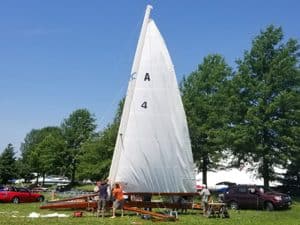
Iceboating weather can be extreme, but usually on the cold side. The MARY B group met on Friday, June 30 (on a day that the National Weather Service issued an excessive heat warning) to set up the historic stern-steerer. Their goals were to practice efficiently setting up the boat, to put up the newly cleaned sails, and to assess the boat. Despite the heat, a big group pitched in to make easy work of it. The new sails and the bright chrome made for an impressive sight.
DRIFTER Plans
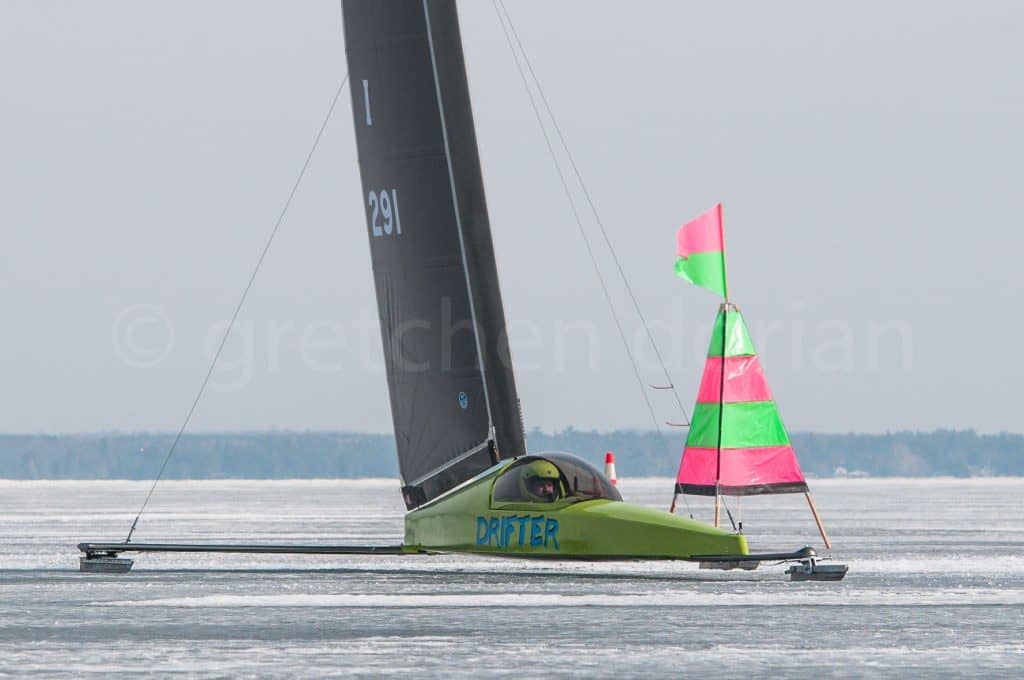
Minnesota ice sailor, Pat Heppert, has put his virtual drafting pencil to paper and produced AutoCAD plans for his C Skeeter build, DRIFTER. Download them here.
It seems like many people have asked me for plans for my current iceboat, which has been kind of partially drawn up for a few years. So I have finally taken the time to fully detail out the entire boat. The goal of this is NOT to profess any sort of iceboating wisdom, just simply to try to get more people interested in building and continue enthusiasm in the sport. It ended up being 29 pages on 11 x 17 paper. The plans and building guide are now posted in a public folder on Google Drive per the link below. You should be able to download the files with the link below; if you have trouble let me know. The plans are in PDF format as well as AutoCAD format. The AutoCAD format can be viewed and printed with a free viewer program downloadable from Autodesk.
Pat Heppert

